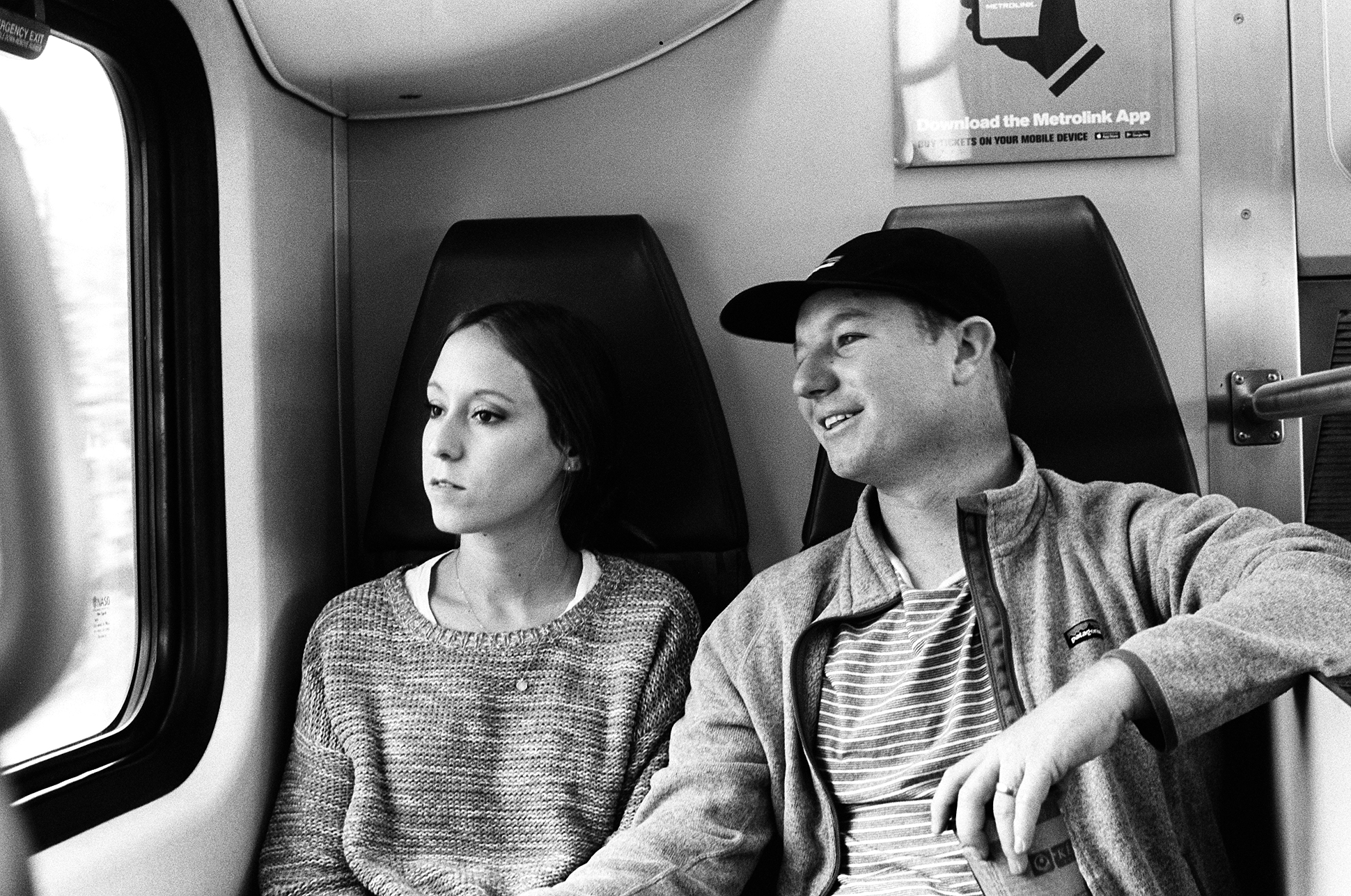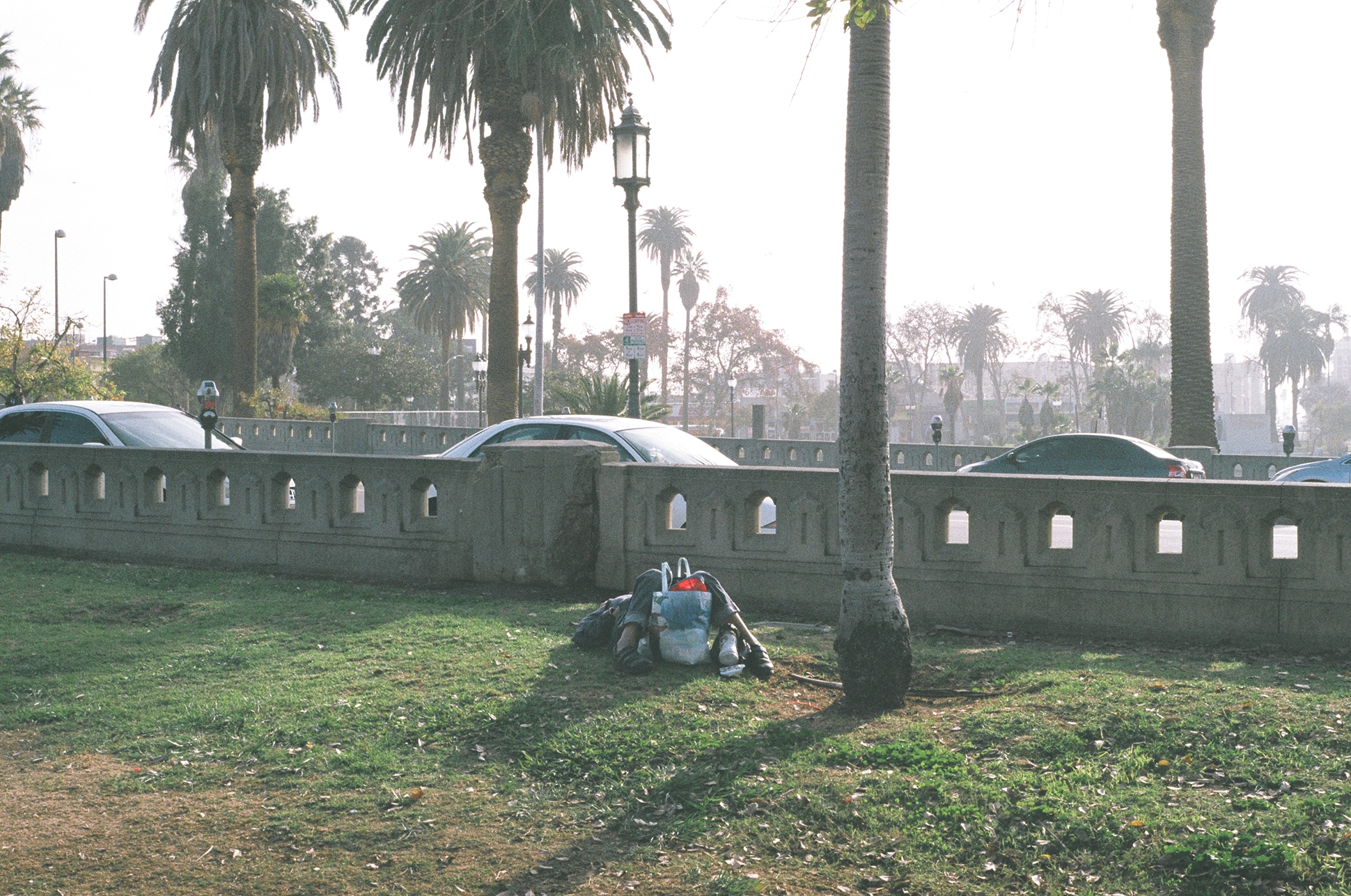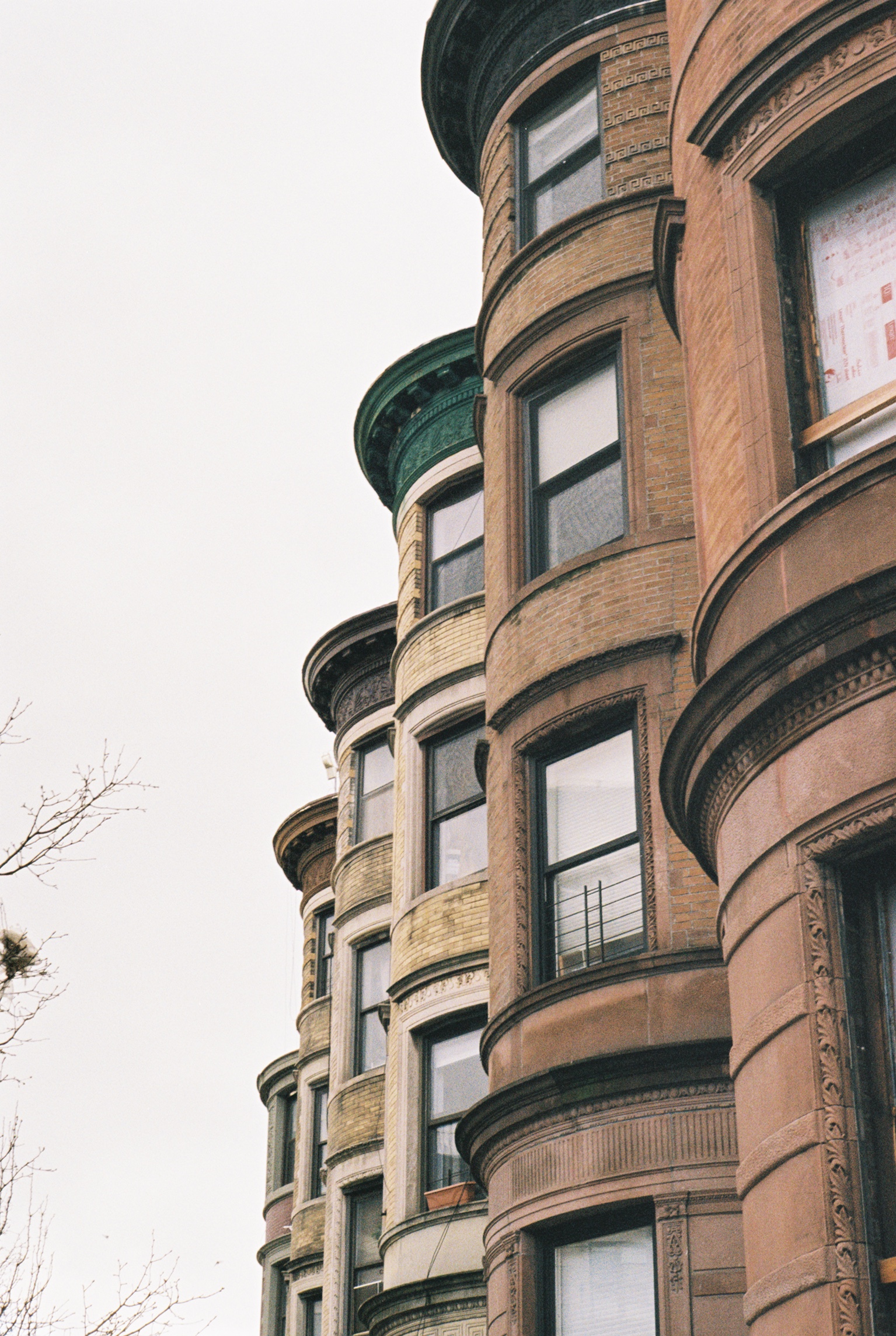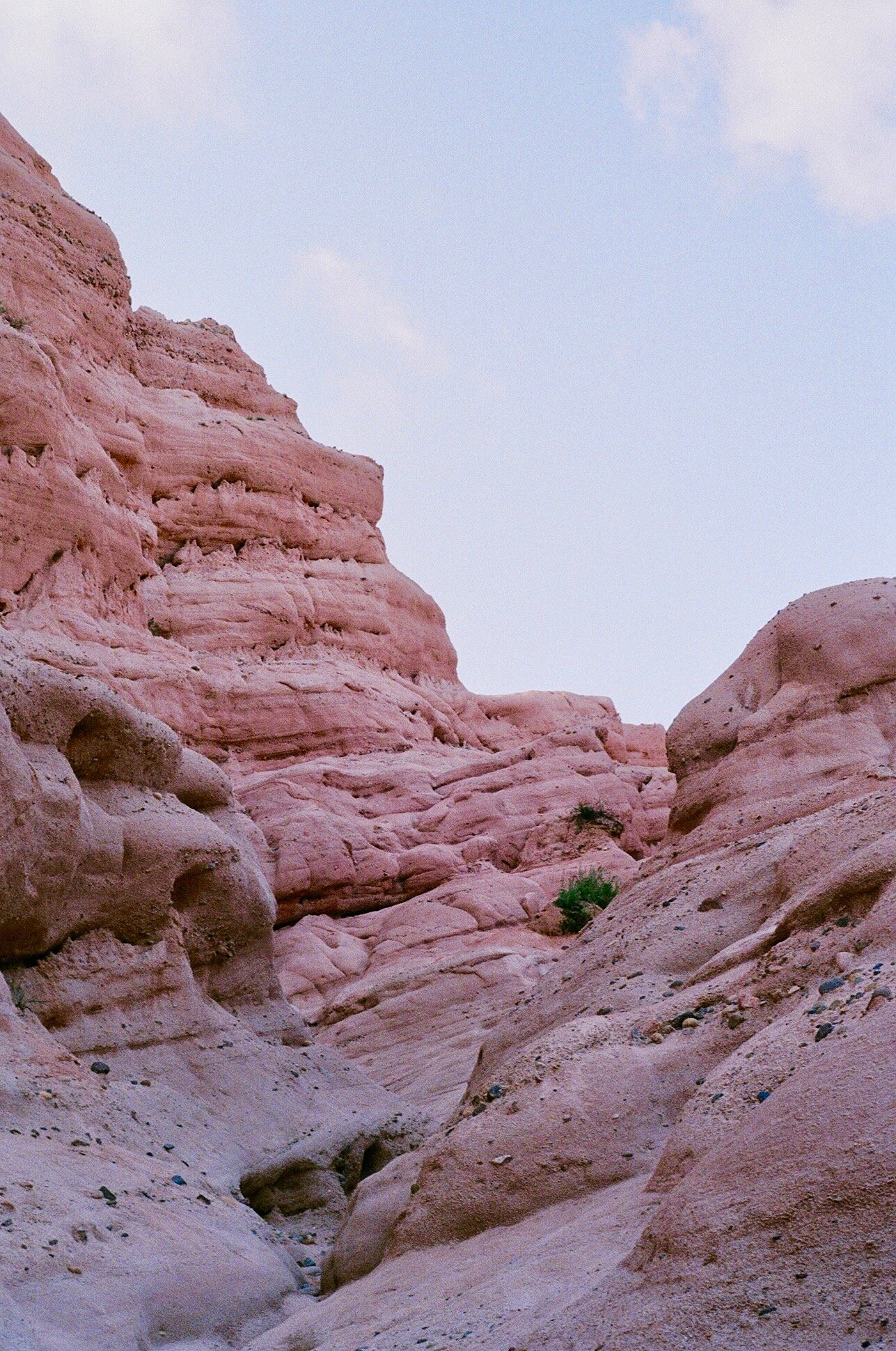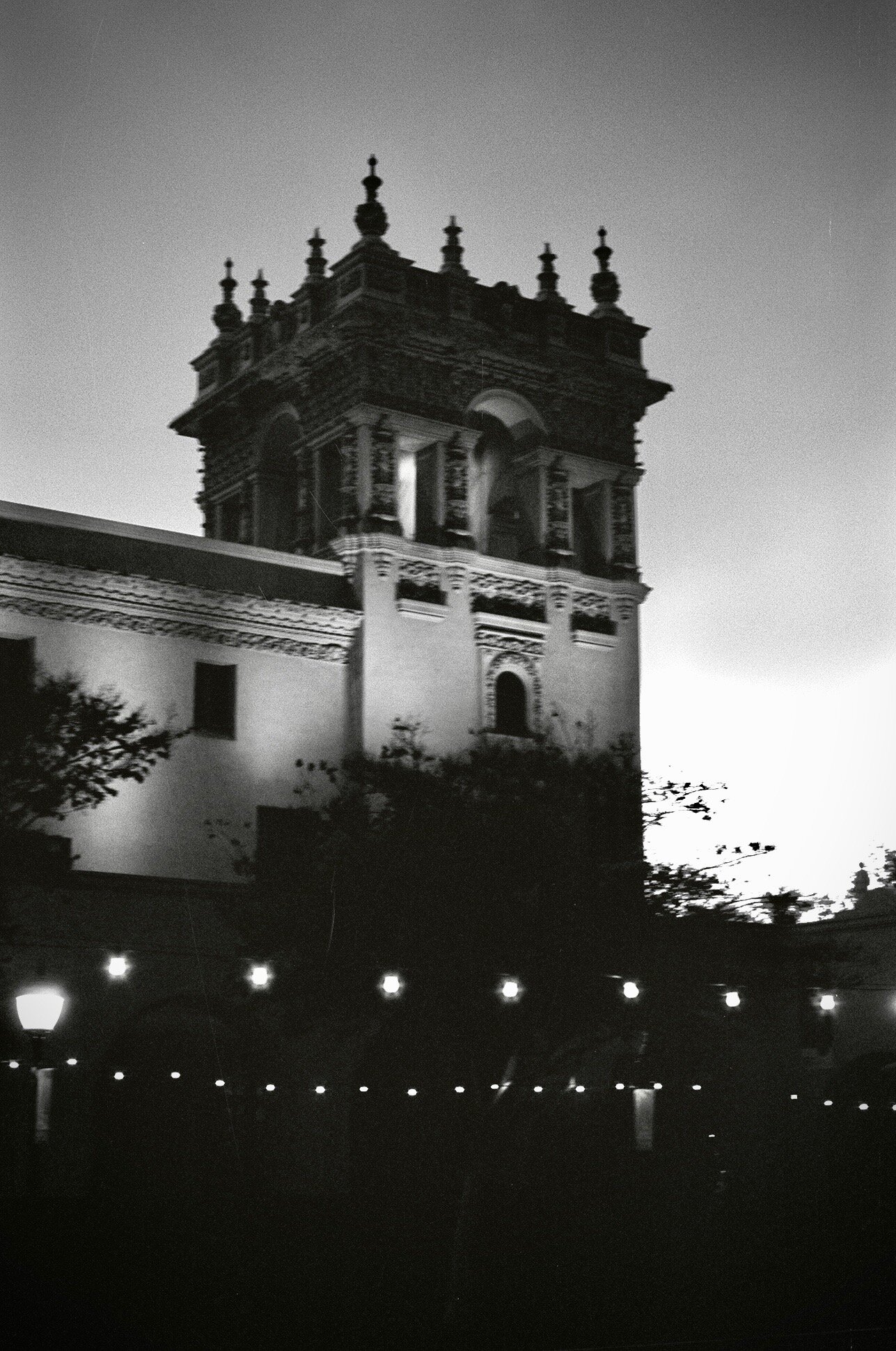LOS ANGELES: BY TRAIN

Deep in the trenches of Manhattan’s chasmic avenues, where buildings of celestial height block out the Sun and reign over the mere mortals below, the mind is rendered incapable of considering a land beyond New York.
Even from the rooftops a look at the city reveals a rugged American topography rivaling the Rocky Mountains or Grand Canyon in impression. A landscape of steel and brick and asphalt and millions and millions of human beings of every color, shape, and size. You may like it, you may love it, you may hate it to the core of your being, but wherever you stand, it will leave an indelible mark on your heart. The gravitas with which it reigns over our world is undeniable, an epochal overlordship so perfectly parodied by artist Saul Steinberg’s famed March 1976 New Yorker cover, "View of the World from 9th Ave”. In it Steinberg depicts Manhattan with a wide expanse of open plain and obnoxiously laconic labelling representing the rest of America in the background. And he’s right: when standing on 9th Ave, or 5th, or 6th, or 7th, or, well, anywhere in NYC, one senses that they are a cog in the wheel that turns our Universe in an onward, eternal spin, with everything else left to fade submissively into afterthought. And yet, there is...
ANOTHER.
New Yorkers, give pause. You are not the only global city in America. Across the fruited plains and amber waves of grain, beyond the purple mountain majesties, a Leviathan emerges from the Pacific. It expands and unfolds across its eponymous basin and beyond, spreading in all directions and entangling with other cities and towns to create an uninterrupted mass of urbanism over 100 miles in length from north to south. It is the antithesis of NYC, rivaling its East Coast counterpart not by playing the same game better, but rather having created its own, one whose rules exist nowhere else.
Welcome to Los Angeles. The City of Angels.
Palm trees, beaches, endless sprawl, lowriders, Chicano culture, gangster rap, skateboarding, VIN SCULLY. From LA emerge contributions to the world that likely could have come from nowhere else, and if not having originated there, were at least perfected there. A lackadaisical wonderland of staggering diversity, an infinite sea of neighborhoods so spread out that penetrating them in their entirety remains a task too steep for the modern conquistadors of Lonely Planet or Buzzfeed (thank goodness!)
Fly into any of the five (!) airports of the LA area at night and peer out the window. You will, with no exaggeration, see streetlights unravel outward as far as the eye can see. Like New York, you can hate it or love it, but its scale will strike an awe in you. Flying in and looking out the window most recently, I pictured the eyes of the Spanish arriving in Tenochtitlan…hours of dark wilderness are broken by an ocean of Man.
Despite being the 2nd largest city proper (approx 4.9 million) in the US, second largest metro area (17 million) and 3rd largest city in world by GDP (over $1 trillion), the LA area lacks the public transit connectivity of cities such as Tokyo, New York or London. Meanwhile, its traffic is STATISTICALLY THE WORST IN THE ENTIRE WORLD (picture a Valley girl saying that while chewing Bubbalicious gum stuck in gridlock) with high levels of car ownership and few alternatives. Though the actual track exists in many places for getting people around, its several systems (LA Metro, Metrolink, and Amtrak California) lack ideal integration.
Sadly, Los Angeles at one time had the largest public transit system on earth, far surpassing New York, London and others, but an unforgivable tragedy led to freeways being promoted and the majority of the glorious Pacific Electric rail lines were literally ripped out of the ground (my dad speaks of his faint childhood memories of riding them with a glazed nostalgia, oh how jealous am I !!! ) However, DO NOT let this deter you.
Los Angeles does, in fact, have a subway and light rail system…
and it’s actually, well, amazing.
I swear it.
As a native Californian living in New York, the thought of returning home for a month this holiday season to a car-plagued four weeks sounded abominable. I’ve surpassed a love of the subway and transcended to an outright obsession for the MTA: where most see delays, I see unabated reading time, where others see chaos, I see a regimented system of tracks and lines that often actually work. The freeway, on the other hand, never “works”. It is pure misery. If Hell is separation from God, I’ve never felt farther from His presence than on Monday mornings at 8:15am on the 405 North. This is, after all, the city from which the term road rage emerged after SIXTEEN shootings in a month in 1987 and more after led local station KTLA to coin the term. LA Times article from said month in ‘87:
“...the gunman fired through the passenger window after flashing his lights when she was slow to leave the fast lane. No arrests”
“Southern California’s Freeway Shootings” . Los Angeles Times. July 31st 1987.
Casual?
Thus when my parents and sisters wanted to do something as a family, the thought arose that I’d frankly care less what the activity was and more that it not involve getting in cars. With both of my parents (Tom and Steph), my triplet sisters (Stephie, Emily, and Demi), two brothers-in-law (Austin and Josh) and my girlfriend (Elena, a much more skilled travel and lifestyle vlogger than myself in her own right) , the notion of piling into cars and caravaning around Southern California sounded less appealing than picking up trash on the beach (bad example, I in fact find that this small gesture can be a therapeutic and mindful respite from life’s craziness, try it sometime even if only for the selfishness of feeling slightly less crappy about yourself on a particularly self-critical day). At the same time, I wanted to shoot a boatload of film and thought it’d be fun to invite my whole family to partake by bringing disposal cameras and using the other cameras in my repertoire (we had four disposables, my two Pentax K1000’s, a Yashica Lynx rangerfinder and finally a digital Canon Powershot to get some video clips for Elena’s vlogs as well). We decided to explore Los Angeles by train, something I’ve done at times out of necessity but never on a weekend for the pure fun of it.
The result?
Big surprise on this one. LA knocked it out of the park (or Dodger Stadium?) !!!
Between Metrolink and LA Metro, visitors and residents alike are treated to rail systems that feel like Prada stores compared to the typical NYC subway car. Metrolink, the regional rail for Southern California, is particularly stunning. We took the double-decker cars from Irvine Station in Orange County to Downtown LA’s glorious Union Station. Along the way the tracks pass by Angels Stadium, much of the more urban northern portion of Orange County (referred to endearingly in my previous post Santa Ana: The Actual Orange County) and onward into the core of LA. Metrolink’s Orange Line, especially on the right (roughly eastern) side of the northbound tracks, acts as a moving and free gallery showing of LA’s immense world of street art. Walls along the tracks are covered with tags and at many points the train passes over some of LA’s archetypal graffiti-infested aqueducts. Half of the romance of a day trip like this lies, at the risk of cliche, in the journey to get to the destination.
My sister Demi and brother-in-law Austin. En route to LA on Metrolink Orange Line. Pentax K1000. Kodak Tri-X 400. Fletcher Berryman 2018.
Out the window. Pentax K1000. Kodak Tri-X 400. Fletcher Berryman 2018.
Downtown off in the distance as we approach Union Station. Pentax K1000. Kodak Tri-X 400. Fletcher Berryman 2018.
I’m quite confident that I already drove home the point that LA is enormous and would take several lifetimes to explore (something I hope to do with this very publication), therefore our trip could only explore an infinitesimal sliver of a far-reaching metro system supporting an evermore vast metropolis extending far beyond the reaches of the lines. I chose the Red Line for its high density of stations, the fact that it’s one of two actual underground subway lines (the Purple Line is the other, and the rest are light rail lines above ground), and for the beauty of the stations themselves (not at all kidding, the City of Los Angeles gives tours of the public art that adorns the stations...think of Penn Station, and then take that thought and douse it in kerosene and light it on fire and then unload several rounds out of a machine gun at the remaining ashes, rebuild entirely and you’ll have resulting anti-matter in the form of LA’s subway stations...they could not be more different, praise the Lord).
But back to Union Station. We pulled in around 11am to the largest passenger railway station in the West and quickly those in our group who’d never been were wowed. This is not an art post and I know hardly a thing about architecture aside from the hyper-concentrated monologue of the Chicago First Lady’s River Cruise architecture tour so I’ll leave those two disciplines alone for now save for the following sentence. Simply put, it’s a remarkably beautiful complex, providing the grandiosity of a Grand Central Station while remaining true to the Californian and Angeleno aesthetic in a marriage of Art Deco, Mission Revival and Streamline Moderne (a nod here to my other article on Santa Ana which also touches on these styles) that is only possible in the Golden State. Whether or not you’re training through or to there, it’s worth walking around the main lobby and grounds.
Pentax K1000. Kodak Tri-X 400. Fletcher Berryman 2018.
After admiring Union Station we walked out the front of its main entrance (also impressive) and crossed the street to Olvera Street. This back alley of Mexican craft stands and food is kitschy and tourist-oriented, no doubt, but also not a place I’d tell you to avoid. Heck, I actually like the trinkets they sell there...I’m not about to pretend like I don’t want more leather belts and loteria cards in my life. The real reason to go over there, however, is El Pueblo de Los Angeles. The plaza from which Olvera Street branches off is original heart of town for LA, dating back to Spanish (1781–1821) and Mexican (1821–1847) rule in California. The plaza is a handsome nod to its colonial past and a great window into the origins of what I already referred informally as the “California aesthetic”.
On the plaza of El Pueblo de Los Angeles. Pentax K1000. Kodak Tri-X 400. Fletcher Berryman 2018.
After our mini-vacation to the Mexican pseudo-exclave of Olvera Street (complete with Mexican consulate), we walked back to Union Station and took the Red Line to Pershing Square.
Pershing Square is the arguable heart of Downtown Los Angeles, bounded on all sides by some of the West’s tallest skyscrapers (including the tallest west of the Mississippi, US Bank Tower, and before you building nerds argue that Salesforce Tower in San Francisco or the Wilshire Grand Center in LA are taller I will point out that the roof height of US Bank Tower is notably higher and I believe that measuring by spires is total garage) and the extraordinarily palatial Biltmore Los Angeles Hotel . It’s the perfect starting point for wandering around downtown, which was, until recently, perceived as off-limits in the way that Times Square was in the 1970s. Thankfully DTLA, as it’s acronym’d, has come a long way and is becoming, dare I say, desirable? I’d come here to skate as a kid and half the fun was how scary and forbidden it was, whether day or night. In any case, we enjoyed strolling around, and at the suggestion of Elena decided to stop through a next-level destination for any bibliophile, The Last Bookstore. We spent over an hour wandering through its many shelves and I hope you take the time to do the same.
Downtown. Pentax K1000. Kodak Tri-X 400. Fletcher Berryman 2018.
Downtown. Pentax K1000. Kodak Tri-X 400. Fletcher Berryman 2018.
Downtown. Pentax K1000. Kodak Tri-X 400. Fletcher Berryman 2018.
“Busted”. Pentax K1000. Kodak Tri-X 400. Fletcher Berryman 2018.
Downtown. Pentax K1000. Kodak Tri-X. Fletcher Berryman 2018.
Pentax K1000. Kodak Tri-X 400. Fletcher Berryman 2018.
Having fallen spell to the legions of books in the bookstore, our group somnabulated outside to be hotwired back into existence by the warm Angeleno Sun. Jumping back on the Red Line, we trained west a couple stops to the Westlake/MacArthur Park Station. As a kid I’d come up here to skate around the area with Alvaredo Street as my main reference point and had been hoping to return. With some of our group not from California, a desire to showcase the grittier albeit more interesting side of the city burned bright in me and was well-supported my dad’s (born and raised in LA) personal anecdotes of memories in each locale through which we passed.
MacArthur Park, Los Angeles. Pentax K1000. Fujifilm Superia. Fletcher Berryman 2018.
MacArthur Park is beautiful. Maybe not in the sense that it’s well kept, nor are there any stand out features aside from the lake from which bodies are occasionally pulled. It’s frankly best known for being home to dozens of not-at-all-legal fake green card vendors and other peddlers, a phenomenon coincidentally covered in solid New York Times article that I must insist on pointing out was published after our visit to the park. So why call it beautiful?
MacArthur Park, Los Angeles. Pentax K1000. Fujifilm Superia. Fletcher Berryman 2018.
MacArthur Park, Los Angeles. Pentax K1000. Fujifilm Superia. Fletcher Berryman 2018.
MacArthur Park, Los Angeles. Pentax K1000. Fujifilm Superia. Fletcher Berryman 2018.
MacArthur Park, Los Angeles. Pentax K1000. Kodak Tri-X 400. Fletcher Berryman 2018.
Westlake, Los Angeles. Pentax K1000. Fujifilm Superia. Fletcher Berryman 2018.
Elena. Pentax K1000. Kodak Tri-X. Fletcher Berryman 2018.
MacArthur Park, Los Angeles. Pentax K1000. Fujifilm Superia. Fletcher Berryman 2018.
Because it’s the perfect cross-section of Los Angeles: every ethnic group imaginable is represented, palm trees fill the park, people from every rung of the economic totem pole pass through and, in true LA form, it’s enveloped by incredible Mexican food options that bound every edge. It’s a simple, no-nonsense place, one that instills gratitude and contentment in me where others might see a seedy and neglected urban park. The neighborhood it anchors, Westlake, is a sight in its own right and worth walking around for a day or more (it’s also one of LA’s denser and more “walkable” neighborhoods on that note, fitting well with the whole theme of not wanting to drive around).
We topped off our day at the best pastrami you’ll ever find west of the Mississippi: Langer's Deli. I’m not kidding here. BEST in town.
This isn’t like “insert-superlative-here good” or “trying to-hype-my-friends-up-to-go-because-they’re-over-it” good. No, no. This is the literal best sandwich in California (In N Out makes burgers, not sandwiches, so no conflict of interest here, and yes you fact-checkers I know that In N Out technically makes grilled cheeses which qualify as a sandwich but let’s try to focus here). It was so good that Elena bought me the goddamn t-shirt (shoutout to you Elena for that absolute legend move). And I don’t just rep any old diner. Far from it. The responsibilities that come with repping a restaurant T-shirt on the unforgiving streets of LA are too much for such a blunder. Even scarier, you better believe I have faith in this place if I’m willing to wear an article of clothing with the words “World’s Best Pastrami” and “Los Angeles” side-by-side out in public in New York City, supreme capital of the deli realm. I wish upon you all the ethereal beauty of experiencing one of these sandwiches, specifically Langer’s magnum opus, the Original #19. May the gods of all religions bless you Langers Deli, for your sandwiches mark a Second Coming in the world of pastrami, a reappearance of East Coast - level perfection in a West Coast setting. “Twelve stars”.
Pentax K1000. Kodak Tri-X 400. Fletcher Berryman 2018.
Well here we are, with an incoherent rambling about the romance of a underutilized regional transit system, a neglected park and an ode to a Jewish deli in the heart of a Latino neighborhood. I’m not sure there’s any common theme here, only a haphazard series of chunky paragraphs tagged left and right with hyperlinks to tangents I deem worthy of taking. Perhaps that’s exactly how it should read, then, for this is an article about Los Angeles, the living embodiment of “unplanned”.
I encourage you to use public transit to venture off on your own trip, spare this world of one more car on the road, and see where Los Angeles, where life, where one metro ticket, can take you.
- Fletcher

